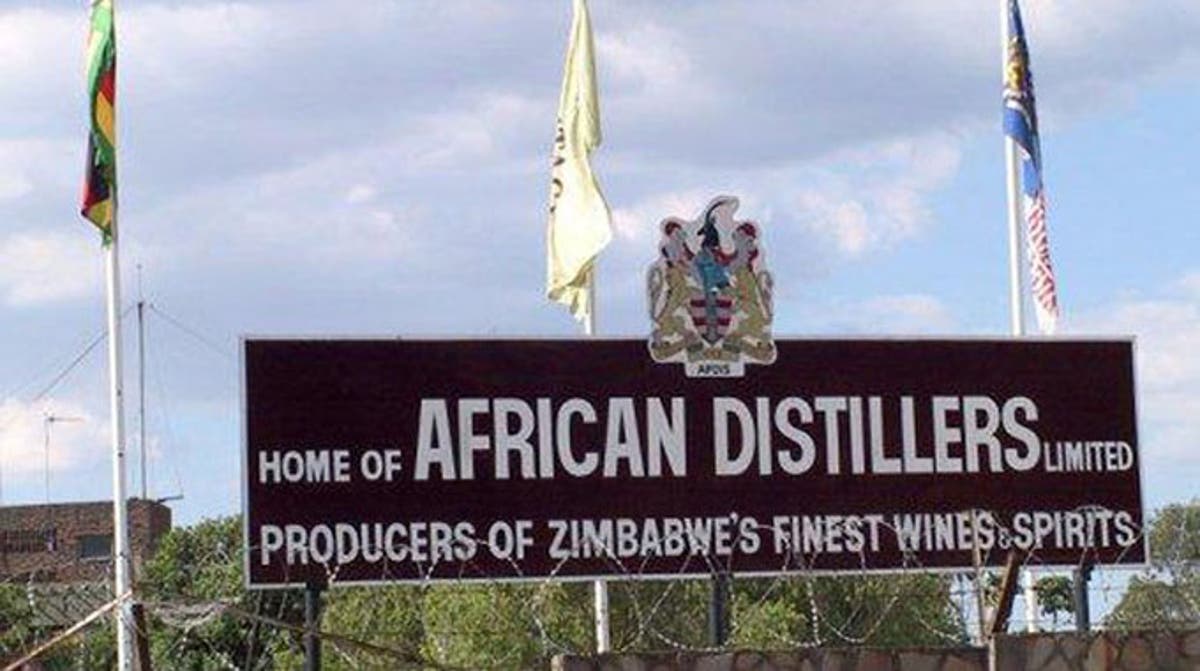Urgent interventions needed to prop up ZiG
THERE is need for urgent interventions to prop up the faltering Zimbabwe Gold (ZiG) in the wake of its rapid depreciation on the black market, which has prompted its widespread rejection in the economy and caused pricing nightmares for registered businesses while driving prices higher and choking the viability of many formal enterprises.
Reserve Bank of Zimbabwe (RBZ) Governor, Dr John Mushayavanhu, introduced the currency on April 5, 2024, soon after his appointment to replace Dr John Mangudya following the expiry of his second term.
ZiG was introduced six months back amid high hopes, to replace the volatile and inflation-weary Zimbabwe dollar.
The Zimbabwe dollar had depreciated to $36 000/US$1 from $1/US$2,5 when it was introduced following a decade-long hiatus which was prompted by hyperinflation in 2009.
The currency had made a good start, holding down inflation and remaining largely stable on both the formal and informal markets, albeit with a slight premium on the open market.
However, this stability has dissipated, amid the risk of outright rejection across the entire economy.
The informal sector, which accounts for more than 75 percent of Zimbabwe’s economy, now transacts 100 percent in foreign currency while the formal businesses still accepting the currency are struggling to establish sustainable and viable pricing models.
Major retailers and wholesalers, among them retail chain Food World and Harare’s iconic Mahomed Mussa, respectively, have either shut-down or significantly scaled-down operations.
This comes amid serious challenges posed by pricing distortions rooted in exchange rate disparities caused by the acute shortage of foreign currency on the interbank market.
Many observers believe the exchange rate disparities are also a product of the limited acceptance of ZiG due to the currency’s convertibility-related challenges.
Several companies are reportedly stuck with the domestic unit, unable to offload it on the interbank market to procure inputs and raw materials, denting confidence in the currency and fanning its rejection, especially in the informal market.
Such a scenario likely poses hurdles for authorities in the plans to dedollarise the economy as planned by 2030, when the multicurrency is expected to end and be replaced by a domestic mono-currency regime at least going by current legal provisions.
Industrialists and retailers who spoke to Business Weekly cited the shortage of foreign currency on the formal market, as the root cause of the currency’s limited acceptance despite a promising start upon its launch. While challenges around the enforcement of regulations have allowed informal sector players to trade exclusively in forex, it has been a completely different game for registered businesses.
Enforcement regulations by the Financial Intelligence Unit (FIU) of the RBZ, has compelled formal traders to continue accepting ZiG. However, this has caused pricing distortions which have driven prices higher, including in US dollars, despite its stability.
The FIU requires the business to use the official exchange rate when pricing their goods, a scenario that has created arbitrage opportunities for informal players who then use swipe payment for the goods and sell on the black market in forex, making double the profit given the exchange rates disparity.
While ZiG trades at 14/US$1 on the interbank, the currency changes hands at ZiG30/US$1 on the parallel market as of yesterday night.
To avoid violation of exchange rate regulations, formal traders are forced to inflate their US dollar prices so that upon conversion into the local currency, the exchange rate is almost in line with the official rate, a scenario that has driven up US dollar prices in the country.
A chief executive officer with one of the country’s major manufacturers told this publication in an interview yesterday that challenges around ZiG were emanating from limited access to foreign currency on the interbank market.
This, the CEO who requested anonymity said, many businesses that have significant foreign currency requirements in their processes have to also demand US dollar payment to be able to fund procurement.
“There is no money on the willing-buyer, willing-seller market. We do have the latest applications that have been at the bank for a long time and we have not received any allotments.
“From where we are sitting, there is no money on that market,” the CEO said.
The Reserve Bank acknowledged this yesterday saying over the past weeks, it had witnessed a build-up in pipeline demand for foreign currency at banks, reflecting transitory foreign currency supply and demand mismatches, thus exerting undue pressure on the foreign exchange market.
The CEO, whose company produces a range of products cutting across several value chains, including agriculture, said the expectation would be for every player along each value chain to have ready use, which includes easy convertibility of the currency, for import purposes, for the domestic currency whenever they receive payment.
Because the companies are struggling to obtain foreign currency on the interbank market, despite assurances from authorities of the “ready) availability of forex, most value chain players are now increasingly demanding payment in foreign currency to secure their positions.
“But on the other hand (as a manufacturer) I am being told to sell my products in organised trade to the Pick ‘n Pays, Bon Marches and OK Zimbabwe who are saying guys you can only bill us in ZiG not in US dollars.
“So, there now is a misalignment along the value chain. The question that arises then is how does anyone fund inputs that are required? Definitely (my company) being in the middle of my input suppliers and my markets, I need foreign currency.
“So, it is a very difficult one. I think the key problem is the exchange rate issue. “There are not too many sellers willing to sell their forex when the exchange rate is wrong,” she said.
Zimbabwe allows exporters to keep 75 percent of their earnings for as long as they please after liquidating 25 percent of the forex at the official exchange rate, but given the economy’s huge appetite for imports, the authorities cannot satisfy the market’s needs.
Dr Mushayavanhu last month indicated that there was sufficient foreign currency on the interbank market, which has seen more than US$264 million injected into the interbank since ZiG was launched in April.
However, this remains a far cry from what was sold on the market weekly before the foreign currency auction system, which traded an average of US$30 million to $40 million weekly, was abolished.
Yesterday, the central bank said it had injected US$64 million in September alone, as part of efforts to prop up the domestic currency, the first time it has intervened with far more than the market used to get from the auction, which was discontinued.
The Reserve Bank’s intervention is consistent with its policy stance of ensuring that all bona fide foreign currency applications are honoured and with its role as a participant in the foreign exchange market.
The Reserve Bank is, therefore, pleased to advise that it will continue to ensure that there is seamless settlement of foreign payments in the interbank foreign exchange market,” Governor Dr Mushayavanhu said in a statement.
He said the cumulative foreign currency injection of US$64 million by the Reserve Bank in September 2024 would effectively mop-up significant liquidity in the market, and further consolidate the stability of ZiG.
This comes amid a structural problem where exporters are allowed to keep the bulk of their foreign currency earnings, apart from the 25 percent sold to the central bank.
Finance, Economic Development and Investment Promotion Minister, Mthuli Ncube, tried to solve this structural flaw by demanding that businesses generating more than 50 percent of their revenue in hard currency pay their income tax on a 50-50 split between ZiG and US dollars.
This is, however, yet to bear any fruit with the exchange on a free fall on the open market, regarded by many as the true market exchange rate.
Allowing exporters to keep three-quarters of their earnings in forex chokes the supply line and starves the formal market of constant flow of forex in a dual monetary regime in which the most preferred currency, the US dollar, is already a legal tender; at least until 2030.
The Government is the only major seller and supplier of forex on the willing buyer willing seller interbank market, which it gets from the 25 percent export surrender facility. Zimbabwe faces acute shortage of foreign currency despite more than US$3 billion sitting in foreign currency accounts.
The southern African country is afflicted by a forex crisis despite generating more US dollars than regional peers such as Mozambique, Botswana and Malawi, which have lower foreign currency generating capacity than Zimbabwe, but do not have serious exchange rate challenges.
Zimbabwe continues to face exchange rate issues despite its foreign currency-generating potential. The central bank said foreign currency receipts increased by 13,4 percent in the first eight months of 2024, compared to the same period in 2023.
“The increase in foreign currency receipts will ensure continued timely settlement of foreign payments from importers’ foreign currency accounts (FCAs) and the Reserve Bank’s weekly foreign currency injections from the export surrender receipts,” Dr Mushayavanhu told Business Weekly.
Zimbabwe’s dual currency system, the CEO noted, had also presented challenges for the country.
“The moment you have a strong currency against a weaker currency (in the same basket) there is no motivation to have a weak currency if I have US dollars myself. The best one can do is just to keep your strong currency, you know you preserve value.
“So, there is already a problem with this multicurrency issue. It is then worsened by the fixing of the exchange rate, which implies that the rate is at 13,9 when the market speaks something else and you cannot fight against the markets.
“There are too many structural problems.”
The CEO also pointed to the issue of mixed signals from authorities, given the Government is paying wheat farmers 100 percent in US dollars, but expects other players in the economy to pay or accept payment in the domestic currency dogged by convertibility issues.
Confederation of Retailers Zimbabwe (CZR) president, Denford Mutashu, said while a lot of progress was made shortly after ZiG was introduced in April, towards market-wide acceptance, the country had taken several steps back due to ZiG volatility and forex access issues.
“What we need to do is to protect the ZiG in any way that we can. One way is to begin concrete efforts to formalise the informal sector through collective efforts to make sure the informal economy, which has gone 100 percent (transactions) and also 100 percent dollarised, also embraces ZiG.
“Unfortunately, it is only 20-25 percent of the economy that is actually embracing the ZiG. In our case (informal traders), the supply chain is largely dollarised, where there are (few suppliers) that accept the ZiG and there are conditions.
“For example, (they accept ZiG) at a premium exchange rate, which is characteristic of a parallel market exchange rate; others may allow you to pay at the official exchange rate, but ask you to ask someone to pay in advance so they release the goods.
“So, the issue of liquidity then kicks-in, someone has to have sufficient liquidity to pay for 3 000 (product) lines in advance, they may not have the liquidity and this is why you may have seen that the formal retail and wholesale sector is struggling at the moment,” he said.
He said businesses with huge stocks of the local currency cannot readily get forex on the interbank market.
ZiG is also not accepted for rental payments anywhere, highlighting the challenges facing the currency.
“The real estate (sector) is completely dollarised. You cannot go around and look for shop space or a premise and get someone to accept payment in ZiG.
“So, such a structure of the economy tells you that it’s only the formal retail and wholesale sectors that have embraced the ZiG and this is still enforced for them to embrace the ZiG at the expense of procurement, at the expense of meeting their cost centres needs that are largely in US dollars.
“So, we need to formalise the economy and also ensure that the Reserve Bank continuously monitors the market and not let the gap between the official and parallel market exchange rates widen.
“It creates fertile ground for arbitrage.
“Right now formal retailers and wholesalers are actually conduits being used by the informal sector.
Someone (registered business) orders a truckload of products and you have people taking turns to swipe for those goods at the official exchange rate and selling those goods in US dollars (on the informal market), making margins of 100 percent,” Mutashu said.
He said there was an urgent need for policies that protect established businesses while accommodating the emerging ones. “I think that is the balance that is lacking,” Mutashu said.
He also stressed that exchange rate disparities had created pricing challenges, with the official exchange rate seen as being way below the real market rate while formal businesses need to avoid falling foul of FIU regulations, a situation the market perceives as price control.
“The official exchange rate itself is viewed as stagnating against a marauding parallel market exchange rate, which is moving up by the day. The enforcement by the FIU is also viewed as a price control mechanism.
“And price control in the past has led to businesses shutting down, it has led to the creation of black market for cash, black market for basic commodities and it has also led to high informalisation of the economy.
“Those symptoms are already there on the market and existing,” Mutashu said.-ebsinessweekl










